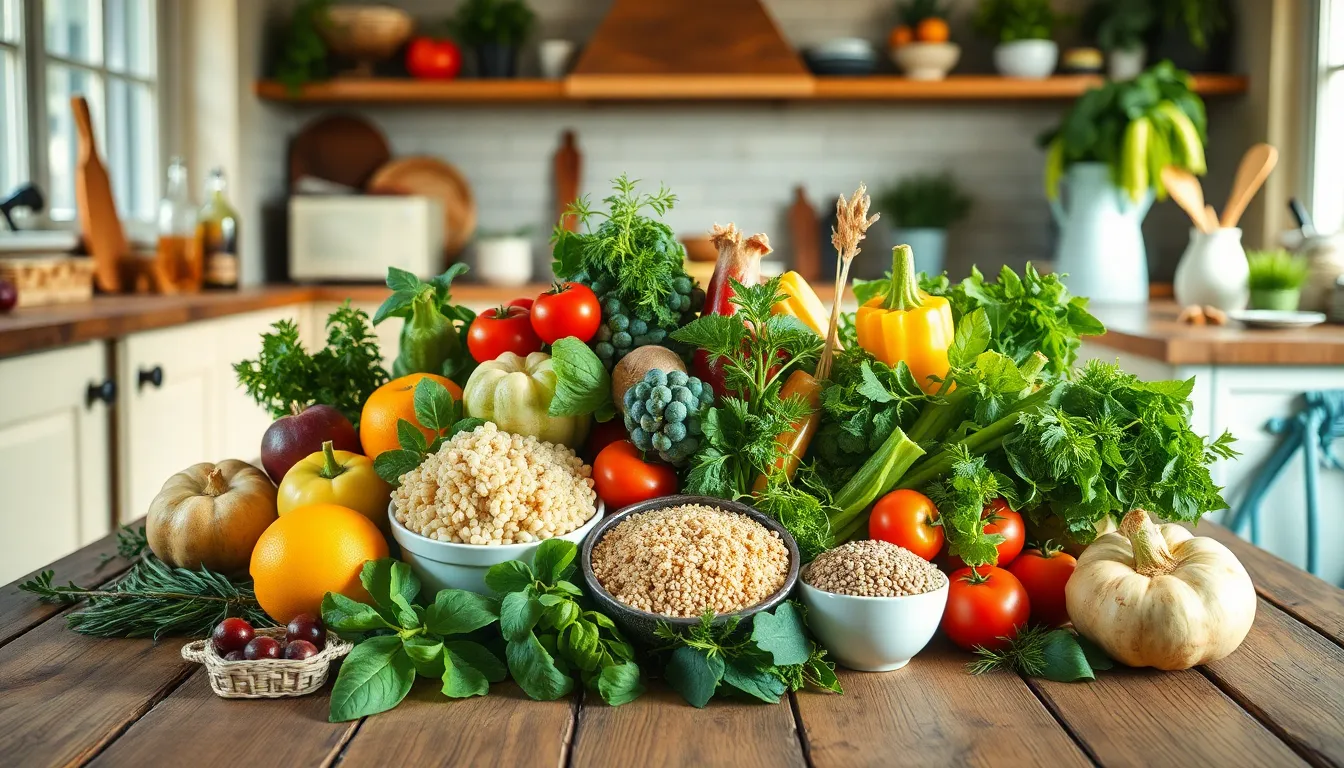In the culinary world, variety is the spice of life, and recipe variations are the secret sauce that keeps meals exciting. Who wants to eat the same dish every night? Not anyone with taste buds! Whether it’s a twist on grandma’s classic lasagna or a daring new take on tacos, the possibilities are endless.
Table of Contents
ToggleUnderstanding Recipe Variations
Recipe variations introduce excitement and creativity into meal preparation. Exploring these changes enhances every dining experience.
Importance of Recipe Variations
Recipe variations play a significant role in preventing culinary monotony. Each alteration can transform a familiar dish into something fresh and enticing. While some may prefer traditional flavors, trying new ingredients or techniques can cater to evolving palates. Additionally, recipe modifications may accommodate dietary needs or preferences, ensuring everyone at the table enjoys their meal. Engaging in this creative process not only makes cooking fun, it also cultivates a deeper appreciation for diverse cuisines.
Common Reasons for Variating Recipes
Common reasons for recipe variations include personal taste preferences and dietary restrictions. Individuals often modify ingredients to suit their health or nutrition goals. Families may require plant-based or gluten-free options, prompting changes to classic recipes. Regional ingredients inspire variations as well, allowing cooks to incorporate local flavors. Seasonal availability also influences choices, encouraging the use of fresh produce. Lastly, cultural traditions may lead to inventive twists on traditional dishes, fostering culinary exploration.
Types of Recipe Variations

Recipe variations enhance culinary creativity. They allow cooks to tailor dishes to specific tastes or needs.
Ingredient Swaps
Ingredient swaps bring new life to classic recipes. Substituting quinoa for rice offers a nutritious alternative in dishes like stir-fries. Using cauliflower instead of flour in pizza crusts caters to low-carb diets. Alternatives like almond milk or coconut yogurt replace dairy in many recipes, accommodating lactose-intolerant individuals. Seasonal ingredients also play a role; for instance, fresh herbs enhance flavor while providing unique profiles. Celebrating diversity in ingredients encourages exploration in the kitchen.
Cooking Techniques
Cooking techniques impact the texture and flavor of dishes significantly. Grilling chicken instead of baking infuses smoky notes while reducing fat. Roasting vegetables caramelizes their natural sugars, enhancing sweetness and flavor. Steaming retains nutrients and provides a light, healthy option for preparing greens. Braising meats yields tenderness that slows cooking brings, creating an entirely different dish experience. Trying various techniques allows for culinary innovation and can transform daily cooking.
Regional Adaptations
Regional adaptations reflect local culture and ingredients. Incorporating spices common to specific regions, like cumin in Mexican cuisine or saffron in Mediterranean dishes, showcases unique flavors. Adjusting recipes to include indigenous ingredients, such as gumbo utilizing okra, honors traditional dishes while embracing local harvests. Incorporating cooking methods that are regional favorites, like smoking in Southern BBQ, makes meals culturally relevant. These adaptations foster a deeper connection to food, encouraging chefs and home cooks to explore their culinary heritage.
Benefits of Exploring Recipe Variations
Exploring recipe variations fosters creativity and meets diverse dietary needs. This approach enriches the culinary experience and promotes enjoyment in cooking.
Enhancing Creativity
Creative cooking invites experimentation with flavors and textures. Chefs and home cooks often discover new favorite ingredients by trying different combinations. The flexibility in modifying a classic recipe like lasagna leads to unique dishes that surprise and delight diners. Experimentation can also result in unexpected pairings that elevate meals, such as infusing traditional tacos with exotic spices. These fresh perspectives inspire individuals to express their culinary voice and transform meal preparation from a routine task into an exciting adventure.
Tailoring to Dietary Needs
Recipe variations address particular dietary requirements easily. Cooks can adapt meals for gluten-free, vegan, or low-carb diets by swapping ingredients. This adaptability ensures that everyone at the table can enjoy the dish without compromise. Substituting traditional rice for quinoa provides a nutritious alternative while introducing new flavors. Incorporating seasonal vegetables creates dishes that align with personal health goals or restrictions. As a result, culinary flexibility not only satisfies individual preferences but also enhances overall meal satisfaction.
Tips for Creating Your Own Recipe Variations
Creativity in the kitchen can lead to delightful discoveries. These tips can spark inspiration for personalized recipe variations.
Experimenting with Flavors
Mixing different flavors can create unique dishes. Use spices from various cuisines to enhance traditional recipes. Incorporate herbs like basil or cilantro for brightness. Consider adding a splash of citrus or a hint of sweetness from honey or maple syrup to balance savory elements. Don’t hesitate to swap out common ingredients for bold alternatives, such as using smoked paprika instead of regular paprika. Trying unexpected combinations allows for exciting tastes and surprises on the palate. Each experiment can lead to favorite new variations that keep meals fresh.
Balancing Textures and Techniques
Adopting diverse cooking techniques elevates dishes. Roasting vegetables enhances sweetness and texture, while steaming preserves their nutrients and crunch. Grilling proteins can add a smoky flavor that complements many recipes. For added crunch, try frying or toasting nuts and seeds. Combining various textures, like creamy fillings with crispy toppings, results in an enticing experience. Each cooking method can highlight different aspects of ingredients, making meals more satisfying. Approaching recipe variations with a focus on texture encourages a dynamic culinary experience.
Embracing recipe variations opens up a world of culinary possibilities. Each tweak and adjustment not only enhances familiar dishes but also invites creativity into the kitchen. By experimenting with ingredients and techniques, cooks can discover new flavors and textures that elevate their meals.
This journey of exploration fosters a deeper appreciation for food and its cultural significance. As home cooks and seasoned chefs alike adapt recipes to suit personal tastes and dietary needs, they transform everyday cooking into an enjoyable adventure. Ultimately, the joy of cooking lies in the freedom to innovate and surprise, making every meal a delightful experience.




